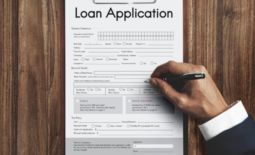How to Make a Retirement Plan
There are a few simple things you can do to make planning for the future easier. Things like establishing a savings habit, making it automatic, and calculating how much you’ll need. Also, consider simplifying the task of planning for retirement by adding a personal retirement plan to your investment portfolio.
Calculate How Much You Need
One way to calculate how much you’ll need to have saved for retirement is to create a detailed budget of your expected monthly expenses and subtract the Social Security payments you’ll get each month. Your expected monthly Social Security benefit information is available through the Social Security Administration website. Then, with the estimated Social Security benefits, add the number of years you may live, based on your life expectancy. If you don’t want to do all those calculations, Motley Fool recommends creating a simplified retirement plan where you save a percentage of your income each month.
Make Saving a Habit
Consistency is important when you’re working toward a prosperous retirement. Whatever the amount you choose to save is, make sure to save it from each and every paycheck, before you spend anything or even pay bills. There are benefits to this, including the opportunity you enjoy to watch your savings grow. It also puts you in a mindset that saving for the future is important.
Automate Your Savings
If you don’t want to manage the transaction to move funds to your savings each pay, automating it is a way to make sure your dedication to a comfortable retirement will be a success. Types of accounts where you may want to send your automated deposits include a Provident Fund or Personal Pension Scheme. One common advantage of a Provident Fund is that many companies match some portion of the funds you deposit. If your company does this, it’s a simple way to build a larger investment portfolio in a shorter time.
Compare Retirement Plan Options
If you’re lucky enough to work for a company that offers some form of retirement plan, you may only be offered one or two retirement plan options. If you’re self-employed or charged with the responsibility to set up a retirement plan for your workers, then some plans to consider are Tier 2 and 3.
Track the Performance of Your Retirement Plan
While frequent monitoring of a retirement plan isn’t necessary, it’s still a good idea to check it at least once or twice per year. Compare how much your money is earning to the amount it would be earning in other types of investments, or compare it to the market as a whole. That way, if you notice your investment portfolio is lagging behind. you have the option to move it to a more lucrative account.
Source: Askmoney.com




